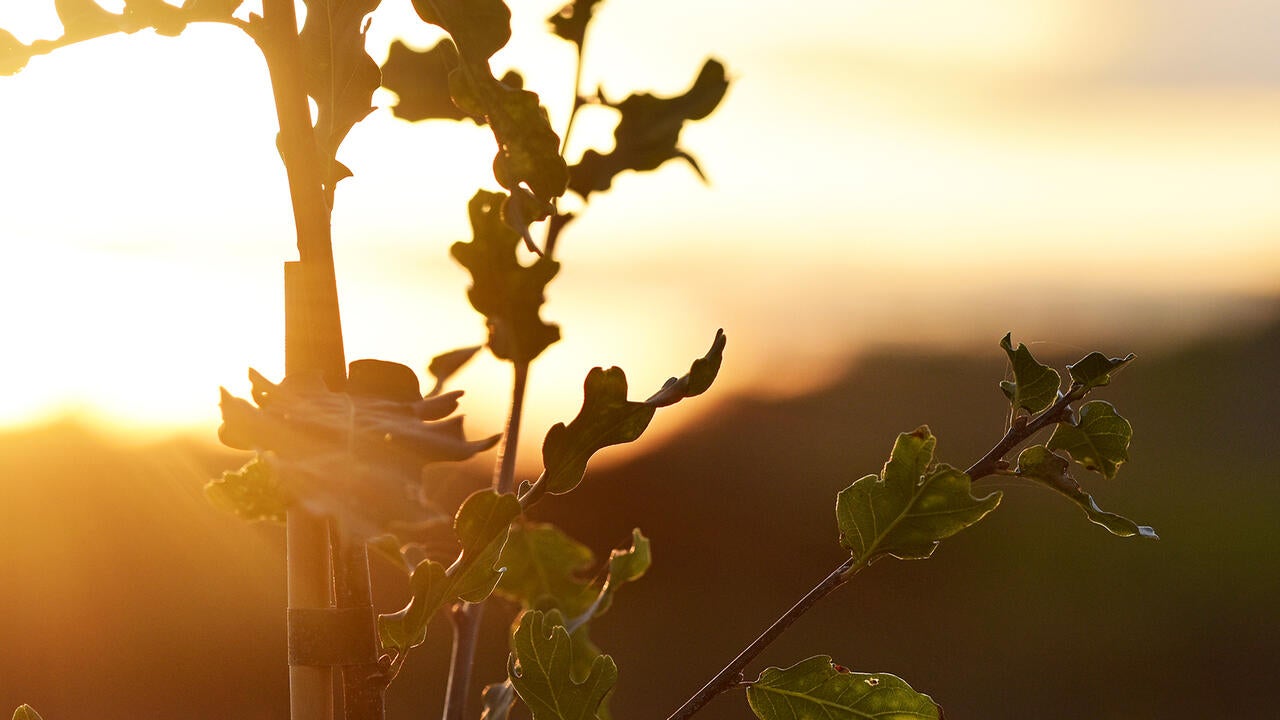
Planting a lasting legacy
Thanks to the efforts of Waterloo Engineering alumnus Monty McDonald (BASc ’68, Chemical) and others, the oak tree saplings were planted in the new Centennial Park in Vimy Ridge

Thanks to the efforts of Waterloo Engineering alumnus Monty McDonald (BASc ’68, Chemical) and others, the oak tree saplings were planted in the new Centennial Park in Vimy Ridge
By Angela Pause Faculty of EngineeringOnce the explosive ordnance disposal teams dug up the 100-year-old artillery projectiles, it was safe for French landscapers to begin their work on the new Centennial Park at Vimy Ridge.
They prepared the ground for the planting of the descendants of the majestic oaks that once stood tall on that stretch of land before being destroyed in April 1917 in the Battle of Vimy Ridge.
Thanks to the efforts of Waterloo Engineering alumnus Monty McDonald (BASc ’68, Chemical) and others, the saplings were planted not only as a tribute to the 3,598 Canadian soldiers who fought and died there, but to honour the surviving soldiers who would carry the lifetime burden of witnessing their friends and fellow soldiers die on foreign soil.
The victory at Vimy Ridge over 100 years ago saw Canada “come of age” and be recognized on the world stage as a nation unto itself.
For the first time, four Canadian divisions fought together as a unified force and accomplished what their allies had failed to do – and at a fraction of the casualty rate. Among the dead and dying would lie the splinters of shattered oak trees and their scattered acorns.
After the battle, Canadian soldier Lieutenant Leslie H. Miller, who was with the Canadian Expeditionary Force (1914 to 1919) and the son of a fruit tree farmer, collected the fallen acorns and sent them back home to Canada.
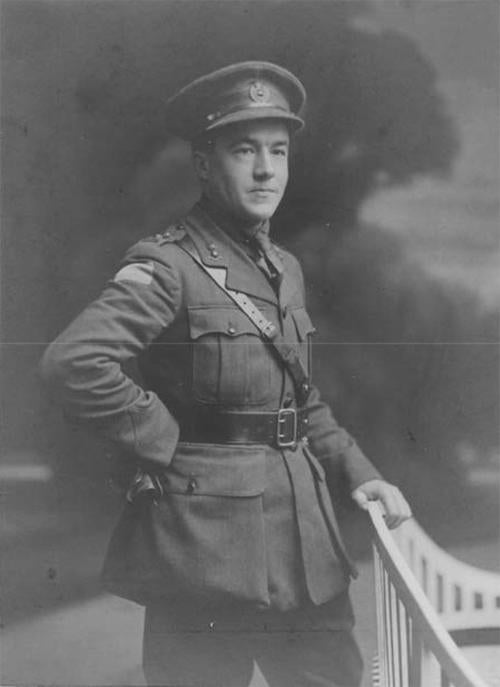
During World War 1, Lieutenant Leslie H. Miller collected acorns in Vimy Ridge and sent them home to Canada.
Upon his eventual return to Ontario, he planted them on his section of his family farm. A generous man, Miller offered free garden plots on his land to immigrant families who were settling nearby.
Decades later, McDonald, who as a teenager spent summers working for Miller on his farm, came up with the idea of having saplings grown from the acorns of Vimy oaks repatriated to land near the Canadian National Vimy Memorial in France.
“When I was in France in 2004, I visited Vimy Ridge,” says McDonald. “When I saw no oak trees there I thought wouldn’t it be cool if I could plant a few acorns from those originally from Vimy Ridge near the memorial.”
For McDonald, it would be a tribute to Miller, who was an influential person in his life, and for the other men who fought in that horrendous battle.
At first, McDonald thought the repatriation of the oak trees would be a straightforward process, but it turned into a demanding four-year-long project that would also be one of the most personally fulfilling for him.
It involved creating a non-profit corporation – Vimy Oaks Legacy – made up of a team of people with diverse experience, including his brother Robin McDonald (BASc ‘71, Mechanical) and long-time friend Bob Domoney (BASc ‘68, Civil) and then partnering with nurseries and the Vimy Foundation itself. It eventually required shipping 500 acorns to a French nursery in order to meet stringent agriculture laws banning the import of foreign-grown English oaks that McDonald was growing at NVK Nurseries near Waterdown, Ontario.
“Our goal was to plant the saplings on the 100th anniversary, but it took the deminers three tries to remove the unexploded ordnance (UXO) on the plot of farmland purchased by the Vimy Foundation," says McDonald. "Extensive grading for wheelchair access also delayed completion to November 9, 2018.”
Removing the UXO was a challenge that McDonald and his team had faced over the preceding years.
The first hurdle was convincing the Vimy Foundation that the English oaks on the old Miller farm, now owned by the Chinese Baptist Church in Scarborough, were indeed the direct descendants of the original Vimy oak trees.
Then there was the refusal to accept Canadian-grown oaks because of the potential of transferring disease.
As the project grew in scope and complexity, the original idea of a couple of saplings turned into a major project for what was now called the Vimy Foundation Centennial Park.
Renowned Canadian landscape architect Linda Dicaire came onboard to design the park and fundraising for the ambitious venture was accomplished by selling 900 of the Canadian-grown oak saplings to communities and individuals across Canada.
Finally, with all the hurdles overcome, on November 9, 2018 with Prime Minister Justin Trudeau, a military honour guard and pipers in attendance, the grand opening of the Centennial Park saw 100 French-grown oak saplings – descendants of the original trees - planted in four concentric circles in the new park beside the Canadian National Vimy Memorial.
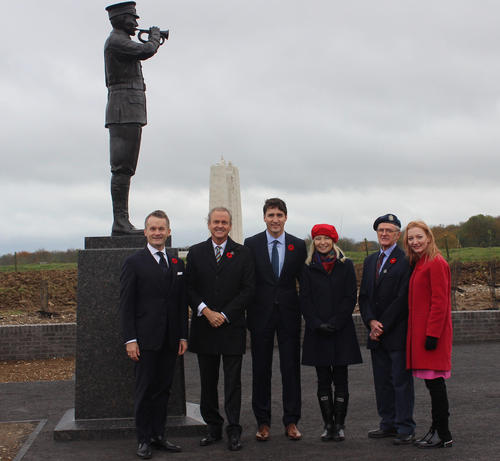
Last November, Prime Minister Justin Trudeau, third from left, and other dignitaries officially opened Centennial Park at Vimy Ridge. Alumnus Monty McDonald, second from right, spearheaded the project to repatriate 100 Vimy oak trees planted at the park.
Each of the circles represents one of the four divisions that fought in the battle and each tree represents a year since the 1917 battle. Every two-metre tall sapling reminds visitors of the bravery and sacrifices Canadians made during that fateful and victorious battle.
The oaks will be at their peak acorn production in 50 to 120 years and grow to 20-40 metres tall, ensuring that many generations to come will be able to experience this living memorial to the men who died on that very ground.
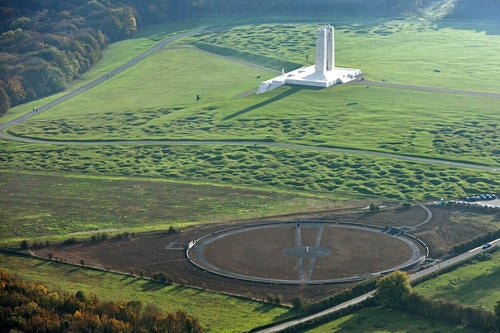
An aerial shot of Centennial Park where the four rows of oak trees in the centre circle commemorate the four Canadian divisions that participated in the 1917 battle. In the background is the Vimy Ridge War Memorial.
This lasting legacy to Canadian soldiers exists because Miller, so long ago, felt the need to collect these orphaned acorns and then plant them on his peaceful Ontario farm.
Yet it took the work of McDonald and his friends from near and far to ensure that descendants of those oak trees will once again flourish on Vimy Ridge as a living tribute to those who fought, those who died, and those who carried on.
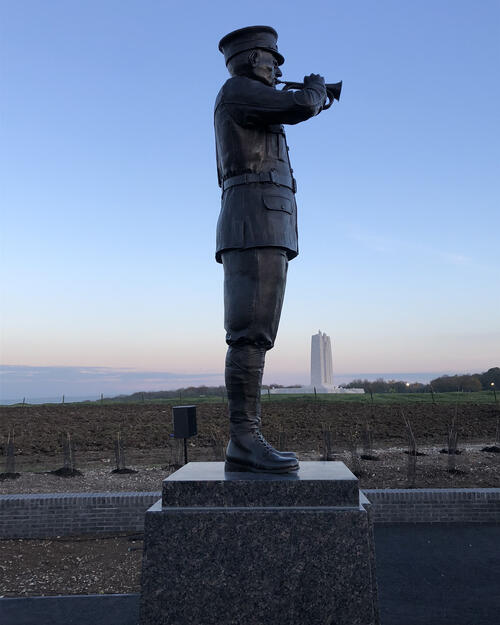
Unveiled last November, the bugler statue at Centennial Park soars over the repatriated oak saplings. The bugler’s twin statue stands at CFB Borden in Barrie, Ontario.

Read more
The Waterloo community comes together to remember, reflect and respond to gender-based violence

Read more
Shop Canadian this holiday season with festive porch plants, fashion-forward apparel, craft spirits and more from Waterloo entrepreneurs
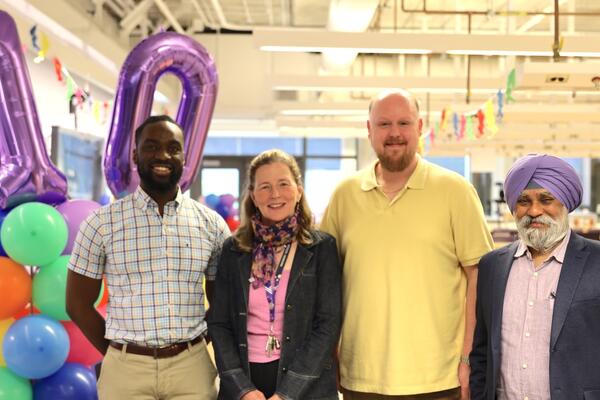
Read more
The Pearl Sullivan Engineering IDEAs Clinic marks a decade of delivering experiential learning embedded in the real world and mentored by industry professionals
The University of Waterloo acknowledges that much of our work takes place on the traditional territory of the Neutral, Anishinaabeg, and Haudenosaunee peoples. Our main campus is situated on the Haldimand Tract, the land granted to the Six Nations that includes six miles on each side of the Grand River. Our active work toward reconciliation takes place across our campuses through research, learning, teaching, and community building, and is co-ordinated within the Office of Indigenous Relations.